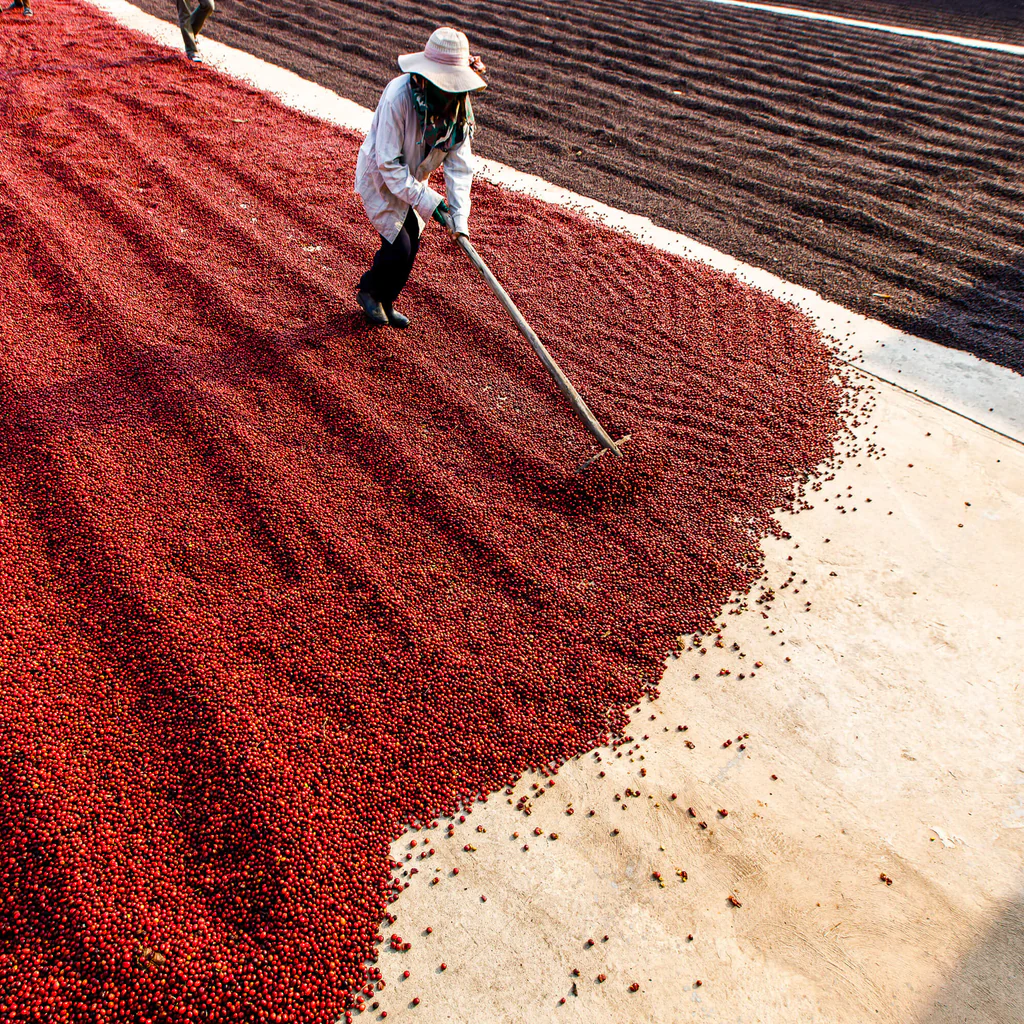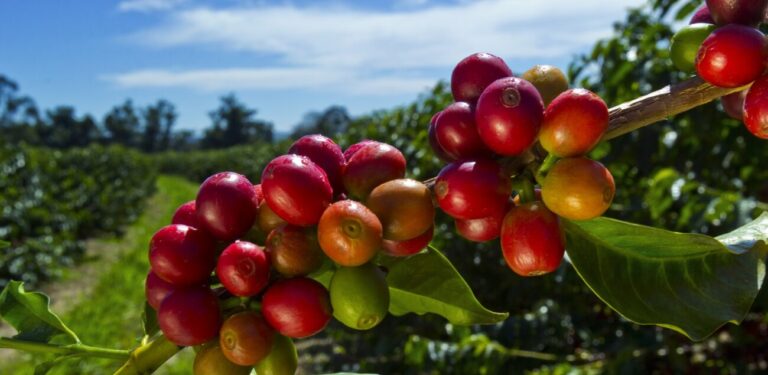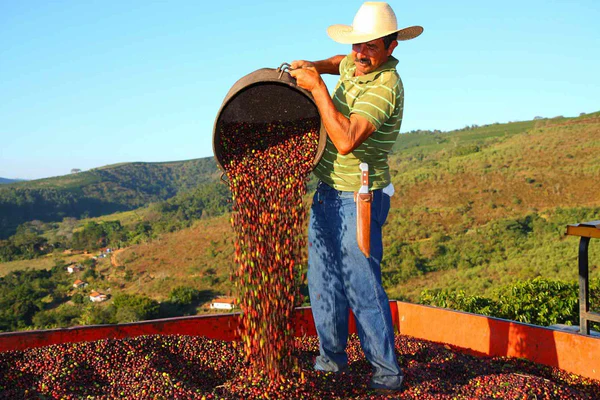Once the coffee cherries are harvested we need to process them so that we end up with green coffee that is ready for export and roasting. The outer skins of the coffee cherry are removed and the slimy muscilage is dried and removed so that we end up with a green coffee bean. It is then important that the green bean has the correct moisture content to enhance storage conditions. There are various processing methods to do this.
Wet method – This is the most common method, also called the washed method. The coffee cherries are immersed and washed in water and then left to dry. During washing the ripe and green cherries sink and the overripe and underdeveloped cherries float. This is separating the floaters. The coffee cherries are usually fermented in water for 24 to 36 hours. Washing the cherries in water produces clean coffees with a good acidity and a good body.
Dry method – Also called the natural or unwashed method. This method is often used in regions where water is limited. The coffee cherries are dried in the sun on patios or rooftops. The harvested cherries are sorted and cleaned to remove the cherries that might be unripe, overripe or damaged. The cherries are usually dried for two weeks but this very much depends on the local method. Some plantations use machine drying.
Semi-dry method – This has many names such as pulped-natural, wet hulled and semi washed. In Indonesia it is called Giling Basah which means wet grinding. This method involves depulping the cherries followed by drying.





